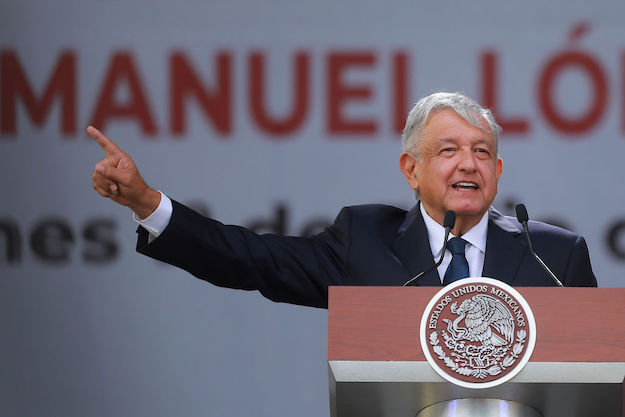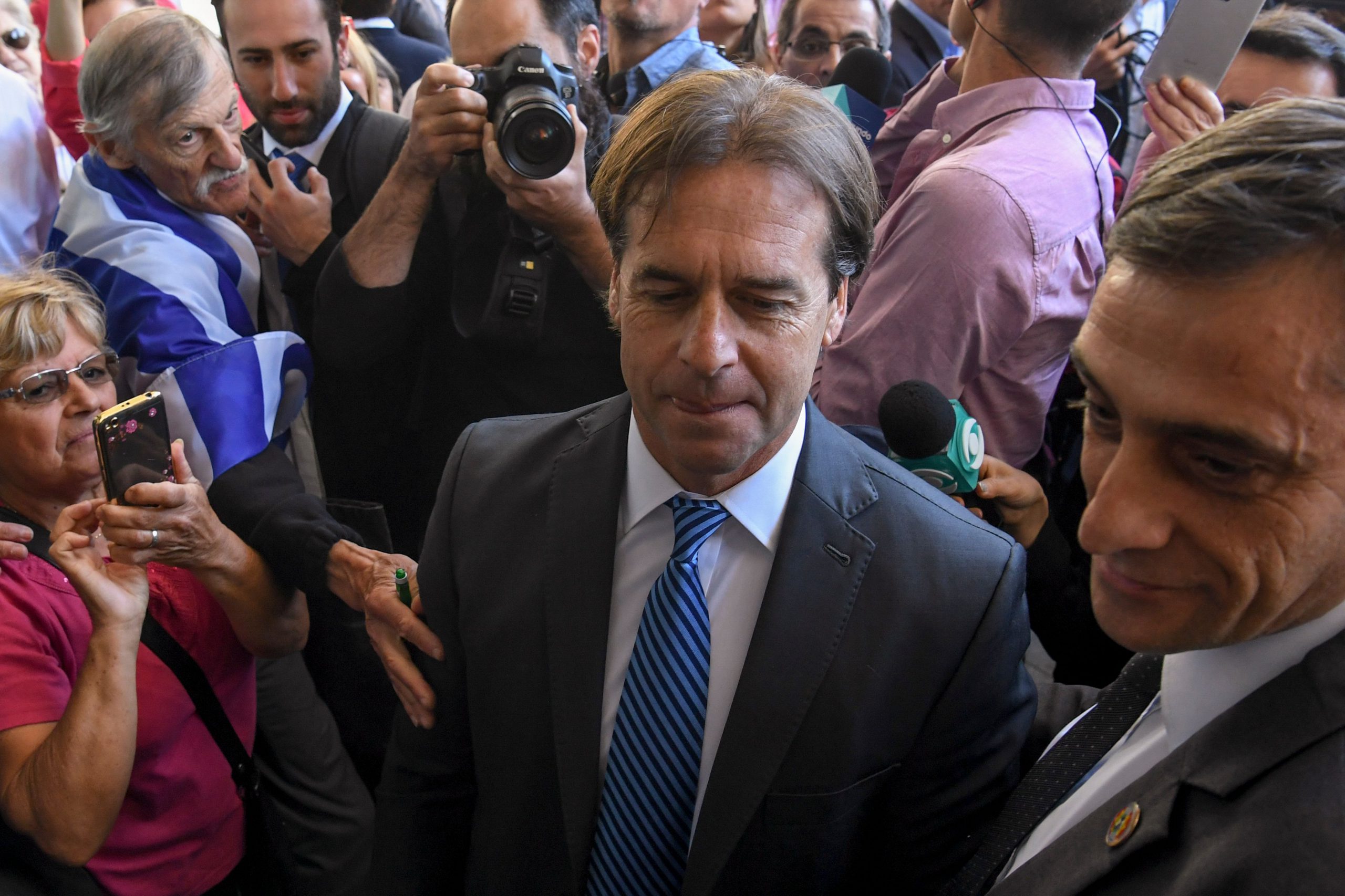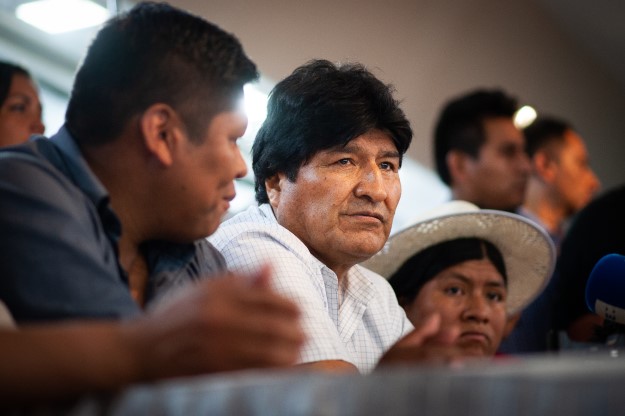MEXICO CITY – Carlos Urzúa’s sudden resignation as Mexico’s finance minister on July 9 reinforced a view of Andrés Manuel López Obrador’s government that had already begun to take hold during the president’s first seven months in office.
In a letter announcing his resignation, Urzúa cited “public policy decisions without sufficient basis” and “the imposition of officials without knowledge of public finances” as his reasons for leaving. In other words, the administration values symbols and politics over technical judgment and expertise.
But Urzúa’s announcement – and the series of decisions that appear to have brought it about – also shows the ways in which AMLO has misinterpreted his victory last July, and the risks his miscalculation holds for Mexico if he doesn’t change course.
For a quarter of a century, Mexico’s economy has grown at an annual rate of around 2.4%. The last economic crisis that developed from within the country came in 1994; though the negative financial impact was significant, it was quickly subdued thanks in part to NAFTA, which led to higher levels of growth than in previous years. Since then, the major economic blows Mexico has endured have coincided with those in the United States: the dot-com bust of 2001-2003, and the Great Recession in 2008-2009.
This mediocre growth over the last 25 years is a story of two halves. North of the 20th parallel that cuts across the Yucatán peninsula, Mexican GDP has grown at rates closer to 4% or higher. South of the line, the country struggles to grow at all. In the south, Mexico remains a country of low productivity, high informality, and traditional jobs and economic activity. To the north, Mexico is globally integrated, focused on exports, offers better jobs and, to a degree, better-functioning institutions.
López Obrador’s election victory in July was a victory above all for the southern half of Mexico. It is here where, until 2018, he had traditionally enjoyed the majority of his support as a politician. That’s until he won last year’s election with an unprecedented 30 million votes from nearly all corners of the country.
That AMLO’s message took hold in parts of Mexico where it hadn’t before fit with the prevailing global zeitgeist of 2018. Voters were fed up with crime and corruption, desperate for a change, and therefore receptive to what López Obrador had to offer.
But instead of combining a needed focus on Mexico’s neglected southern half with a modern vision for how to move the country forward, AMLO has taken things in the other direction. He seems not to realize that in economic terms, the new adherents to his cause want more of Mexico to look like the north, not less.
AMLO believes he has a mandate to change not just Mexico’s social structure, but its economic one as well. This is the logic that has governed his first seven months in office – and indeed the two that preceded his inauguration in December, when he informally held control thanks to a new Congress (in which his coalition holds an ample majority) and the virtual abdication of the then-sitting president, Enrique Peña Nieto.
In October, before even becoming president, López Obrador canceled construction of a new Mexico City airport and, in the same month, declared that Mexico would receive and support Central American migration. Both of these decisions have brought complications.
First, the cancellation of the biggest infrastructure project in Mexico in decades eroded confidence in AMLO’s economic program, leading to a reduction in private investment and economic deceleration ever since. The declaration on migration cast a shadow over López Obrador’s relationship with Donald Trump, which in May turned into an out-and-out conflict – again with broad economic consequences.
Once formally president, López Obrador started to promote the three projects that together make the centerpiece of his development plan: The construction of an airport at Santa Lucía to replace the one he canceled; a new oil refinery at the port in Dos Bocas, Tabasco; and the construction of a tourist train in the country’s southeast.
All three projects have been broadly criticized for failing to address Mexico’s infrastructure challenges and threatening the environment. In general terms, they represent a backward-looking vision of Mexico’s economic future. López Obrador wants to return Mexico to the 1970s because, in his inexact recollection, these were good years for the country. Unfortunately, he seems to be succeeding.
Take, for example, the refinery at Dos Bocas.
Oil production in Mexico has fallen at a near constant rate since 2004, when it was 3.4 million barrels per day (mbd) compared to 1.6 mbd today. Pemex, the state-run oil firm, now holds over $100 billion in debt with creditors, and about the same amount in labor liabilities. Technically speaking, the company is broke. That’s why ratings agencies have downgraded its debt, some even to a junk status.
In the face of this fall in oil production – Pemex’s most profitable business – AMLO has proposed the construction of a new refinery, a business in which Pemex has been losing money for decades. Investors haven’t abandoned the company, because they know the government will assume its debts, but that means more sovereign risk.
Urzúa’s announcement would be cause for concern in the best of circumstances, but is especially so in this context. The government lost a minister who championed technical expertise and sound decision-making at a time when Mexico faces numerous economic challenges, from Trump to Pemex to crumbling investor confidence.
Urzúa’s successor, Arturo Herrera, worked with him in López Obrador’s Mexico City government 15 years ago, and was also Urzúa’s successor back then (after Gustavo Ponce occupied the post for a brief time). Herrera has international experience, and has had exposure with foreign investors during the past several months. He seems to have played a significant role in developing the business plan for Pemex that is now expected to be released in coming days. The immediate buzz after Urzúa’s resignation was that disagreement around this very plan was behind his decision to step down. If that is true, and there’s no change in the plan, Mexico’s economy could face trouble ahead.
—
Schettino is a professor at the School of Government at Mexico’s Monterrey Institute of Technology and Higher Education. Follow him on Twitter @macariomx








